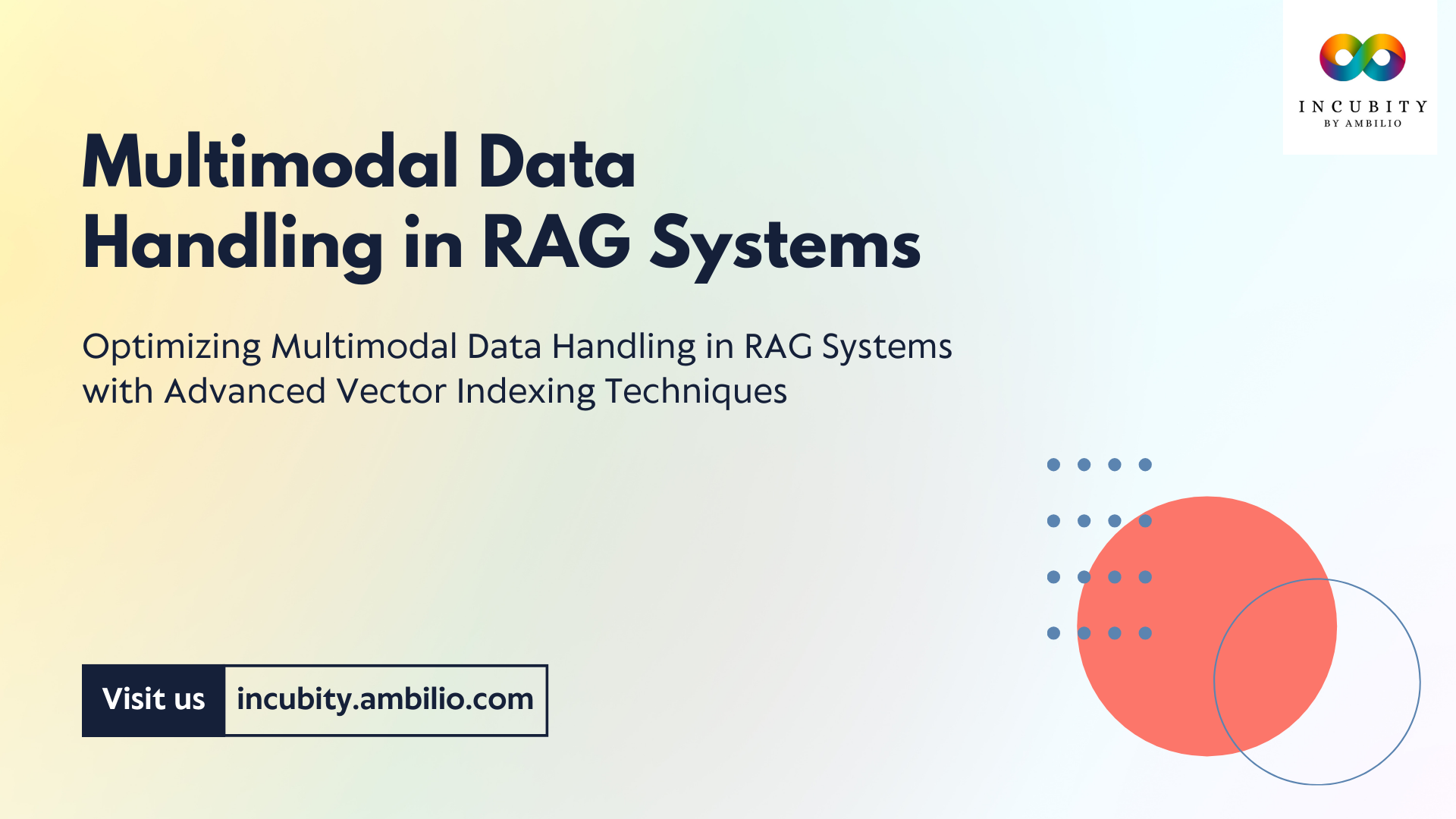In today’s digital landscape, the integration of diverse data types—such as text, images, and videos—into a unified system is becoming increasingly vital for generating accurate and contextually relevant responses. Retrieval-Augmented Generation (RAG) systems stand at the forefront of this integration, leveraging advanced techniques like vector indexing to handle multimodal data effectively. This article explores how vector indexing enhances the management and retrieval of multimodal data in RAG systems, providing a comprehensive understanding of its role and benefits.
Introduction to RAG Systems and Multimodal Data
Retrieval-Augmented Generation (RAG) systems combine the strengths of retrieval and generation to produce contextually accurate and relevant responses. By integrating multimodal data—text, images, audio, and more—RAG systems aim to offer a more nuanced and comprehensive understanding of user queries. Vector indexing plays a crucial role in this integration, transforming diverse data types into a format that can be efficiently searched and retrieved.
The Concept of Vector Indexing
Vector indexing is a method used to organize and manage data by converting it into vector embeddings. These embeddings represent the data in a numerical format that reflects its semantic meaning and relationships. In the context of RAG systems, vector indexing facilitates the efficient retrieval of information by allowing the system to compare and match vectors based on their semantic similarity.
Steps in Handling Multimodal Data with Vector Indexing
1. Content Extraction
The initial step in processing multimodal data involves extracting content from various sources. For text, this means breaking down documents into manageable chunks, such as paragraphs or sentences. For images, it involves identifying and cataloging visual content. This structured extraction ensures that all data types are ready for the subsequent embedding and indexing processes.
2. Embedding Data into Vector Space
After extraction, the content is converted into vector embeddings. This process involves:
- Text Embeddings: Text data is transformed into vectors using models like BERT or GPT. These models capture the semantic meaning of the text, translating it into a numerical format that reflects its context and content.
- Image Embeddings: Images are processed using models such as CLIP, which generates vector embeddings that represent the visual content. CLIP maps both text and images into a shared vector space, enabling the system to compare and retrieve information across different modalities.
4. Semantic Retrieval
With content embedded into vectors, the system can perform semantic retrieval. When a user submits a query, it is also converted into a vector representation. The retrieval process involves:
- Query Vector Creation: The user query is embedded into a vector using the same model employed for the content. This query vector is used to search the vector store, which contains embeddings for both text and images.
- Similarity Search: The system compares the query vector against stored vectors to identify the most relevant text and image embeddings. This ensures that the retrieved information is semantically aligned with the user’s query.
4. Retrieval Approaches
RAG systems may use different strategies for managing multimodal data retrieval:
- Unified Vector Space: In this approach, all modalities are embedded into a single vector space. The system retrieves relevant text and image embeddings from this unified space, simplifying the retrieval process but potentially losing some modality-specific details.
- Separate Vector Stores: Alternatively, distinct vector stores can be maintained for text and images. This method allows for specialized retrieval processes tailored to each modality, improving precision by addressing the unique characteristics of text and images.
5. Answer Generation
Once relevant data is retrieved, the system generates a coherent response by:
- Compiling Retrieved Data: Gathering relevant text chunks and images based on the retrieval results.
- Using Multimodal Language Models (MLLMs): The retrieved content is processed by an MLLM, which can analyze both text and images to generate a comprehensive response. This step ensures that the final output incorporates all relevant data types.
6. Addressing Practical Challenges
Handling multimodal data presents several challenges:
- Semantic Alignment: Ensuring that the semantic representation of images aligns with the text requires careful preprocessing and possibly generating textual descriptions for images.
- Filtering and Quality Control: The system must filter out irrelevant or low-quality images to maintain the quality of responses. Effective quality control mechanisms are essential for ensuring that the retrieved content meets high standards.
Benefits of Vector Indexing in Multimodal RAG Systems
Vector indexing offers several advantages for managing multimodal data in RAG systems:
- Efficiency: Vector indexing enables rapid similarity search, allowing the system to quickly retrieve relevant information even from large datasets. This efficiency is crucial for maintaining performance in dynamic and data-intensive environments.
- Scalability: Advanced indexing techniques, such as Hierarchical Navigable Small World (HNSW) graphs, allow the system to handle growing volumes of multimodal data without sacrificing performance. This scalability is essential as the amount of data and the complexity of queries increase.
- Flexibility: The ability to choose between unified and separate vector stores provides flexibility in managing different data modalities. This adaptability allows RAG systems to be tailored to specific needs and constraints, enhancing their effectiveness across various applications.
- Enhanced Responses: By integrating text and images effectively, RAG systems can generate more accurate and contextually rich responses. This improved capability leads to better user satisfaction and more meaningful interactions.
Final Words
Vector indexing is a fundamental technology for handling multimodal data in Retrieval-Augmented Generation (RAG) systems. By converting diverse data types into vector embeddings and employing efficient retrieval techniques, vector indexing enables RAG systems to manage and retrieve text, images, and other modalities effectively. The result is a system that delivers more accurate, contextually relevant, and comprehensive responses, making it a valuable tool in today’s data-driven world. As RAG systems continue to evolve, vector indexing will remain a key component in enhancing their ability to integrate and leverage multimodal data.



